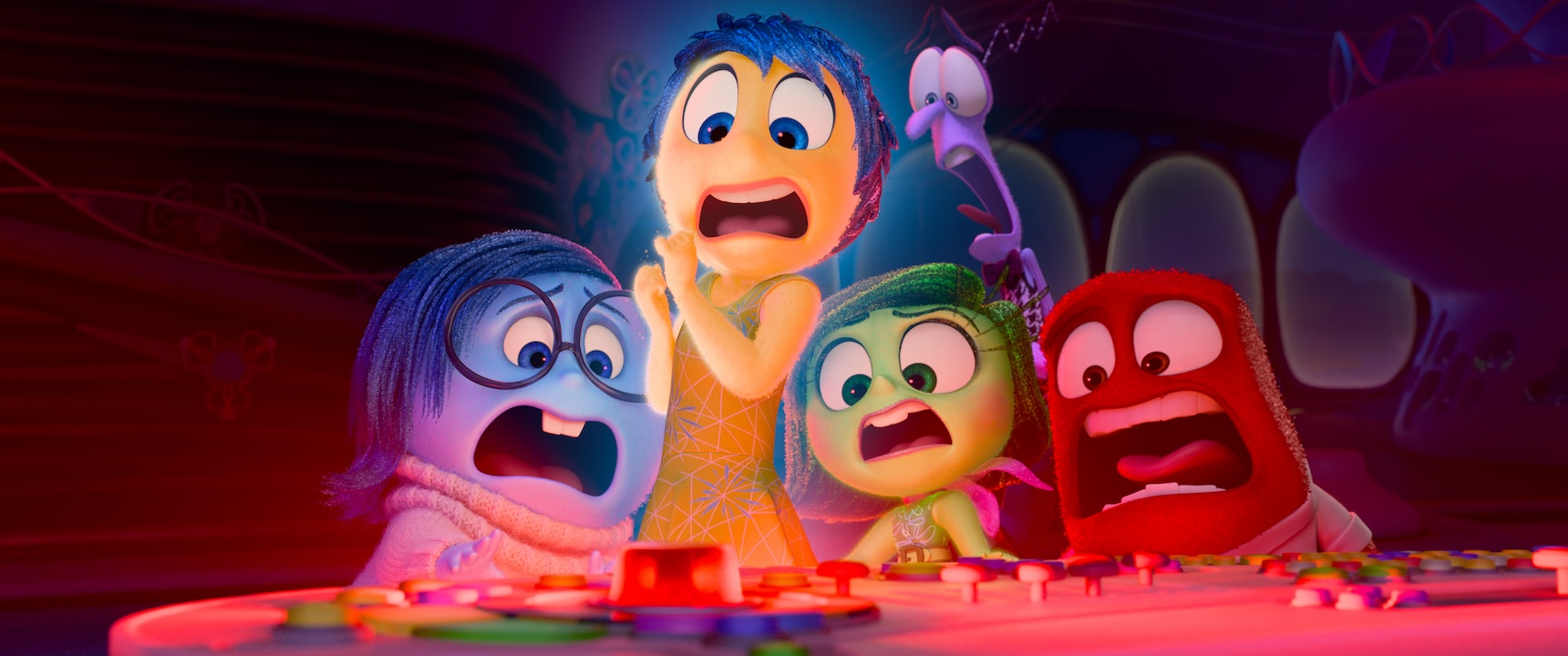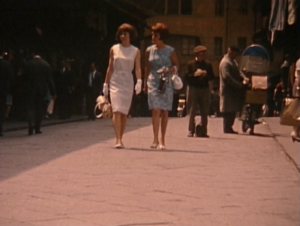
Joy must be working overtime in the minds of Disney’s higher-ups, because Inside Out 2 continues to make money. Heading into Fourth of July weekend, the film has stayed at number one and looks to drop off small again, even with challenger Despicable Me 4. But before the film released, fans had to deal with one of the new emotions introduced in the film: anxiety. And that’s because Disney Pixar was messing with the formula that made the first film so wonderful by switching out the voices for two of the central character.
The first Inside Out from 2015 focused on Joy (Amy Poehler) and her opposite Sadness (Phyllis Smith), two of the emotions living inside the head of pre-teen Riley (voiced by Kaitlyn Dias in the first film, Kensington Tallman in the sequel). The two learn to deal with one another as Riley moves with her parents from Minnesota to California, which upsets her otherwise calm life.
But they aren’t the only two feelings inside Riley’s head. They’re joined by Anger (Lewis Black), Fear (Bill Hader), and Disgust (Mindy Kalling), each of whom gets one or two great line or even scene in the first movie. All three of those emotions return for Inside Out 2, too, which checks in on the feelings as Riley enters high school. With new situations comes new emotions, namely Anxiety (Maya Hawke), Envy (Ayo Edebiri), Ennui (Adèle Exarchopoulos), and Embarrassment (Paul Walter Hauser). Black came back as Anger, but when Fear and Disgust talk in Inside Out 2, they sound a bit different. That’s because Disgust is now voiced by Liza Lapira of The Equalizer, and Fear is voiced by Arrested Development alum Tony Hale.
What happened to Hader and Kaling, one might ask? In simple terms, Disney decided they weren’t that valuable. As Vulture reported in 2022, Hader and Kaling were each offered $100,000 for their parts, which the actors found insufficient.
To most of us reading this, $100,000 to do anything sounds like a pretty good deal. But it needs to be put into context. Even if we ignore the overhead that Hader, Kaling, and other working actors need to do their jobs, paying agents, assistants, and other members of their support team, the number is minuscule compared to other aspects of Inside Out 2. Poehler was paid $5 million for voicing Joy in the sequel. As the lead character, it makes sense that she would get paid more, as she does more work than anyone voicing Fear and Disgust. But does she do 98 percent more work? Of course not.
Likewise, look at the profits that Inside Out 2 has already turned. As of this writing, Inside Out 2 has grossed $1.124 billion at the box office, making even Poehler’s big salary look miniscule. In light of the film’s continuing profits, the $100,000 offered to Hader and Kaling seems like a pittance, especially as it draws attention to all of the other people whose work made the movie possible. Certainly, the various animators, engineers, editors, and other support who also created Inside Out 2 weren’t even offered $100,000, let alone something commensurate with the level of work they put in.
Look, it’s hard to feel bad for rich people. Hader and Kaling are still riding high off of successes such Barry and The Mindy Project, and they have a net worth greater than anyone probably reading this. But they put more work into the first Inside Out than any of the executives and studio personnel who received a larger share of the $858.8 million that movie made at the box office.
As the recent actors and writers strikes demonstrated, labor has been devalued and those who profit off labor have been taking more while producing less (see: basically everything David Zaslav at Warner Bros. has ever done). The famous faces and huge numbers involved in Hollywood only serve to draw attention to dynamics that are in play throughout the American economy, with most workers receiving far less pay for their labor than the profits they generate.
Obviously, Hader and Kaling’s departure from Inside Out 2 didn’t hurt the movie in terms of earning potential and critical success. Nor has it seemed to stall either actor’s career. But it’s important that we don’t lose sight of the basic principle driving their decision: work deserves fair compensation, especially when it creates profit. When we notice that two actors have been shortchanged by a big studio, we shouldn’t feel disgust at the pampered movie stars’ arrogance or fear that big businesses could do whatever they want. We should feel anger that one worker has been devalued, because when one worker is devalued, all workers are devalued.
Inside Out 2 is now playing in theaters.
The post Inside Out 2: Why Mindy Kaling and Bill Hader Didn’t Come Back as Disgust and Fear appeared first on Den of Geek.







